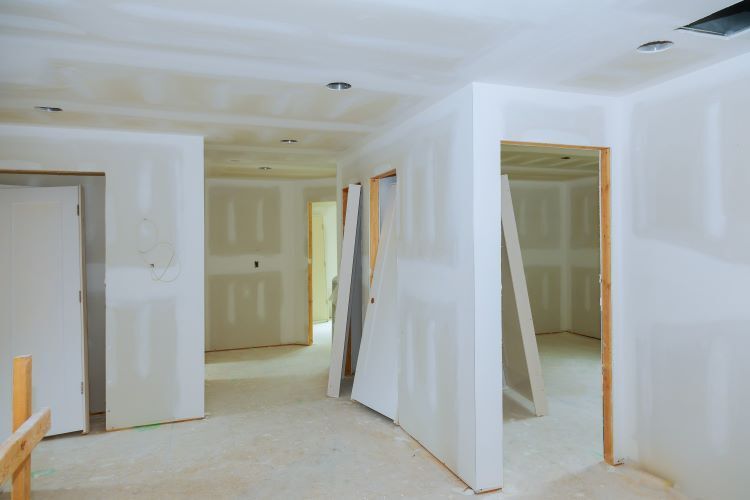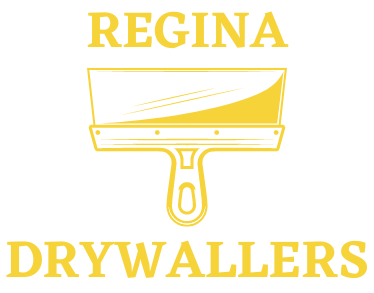Avoiding Common Mistakes in Drywall Installation

Drywall installation is a crucial step in finishing the interior of any building, whether it's a new construction project or a renovation. When done correctly, drywall creates a smooth, durable surface ready for paint, wallpaper, or other finishes. However, even small mistakes during installation can lead to problems down the road, such as cracks, uneven surfaces, or visible seams. At Regina Drywallers, we understand the importance of getting drywall installation right the first time. Here’s a guide to avoiding common mistakes during drywall installation to ensure a flawless finish.
1. Incorrect Measurements and Cutting
One of the most common mistakes in drywall installation is inaccurate measurements. Poorly measured and cut drywall can lead to large gaps, uneven edges, and wasted materials.
How to Avoid This:
- Measure Twice, Cut Once: Always double-check your measurements before making any cuts. Use a reliable tape measure and mark your measurements clearly.
- Use the Right Tools: A utility knife and a straightedge are essential for making precise cuts. For more complex cuts around outlets or fixtures, consider using a drywall saw or a rotary tool.
- Leave a Small Gap: When installing drywall sheets, leave a small gap (about 1/8 inch) at the floor and ceiling to allow for expansion and contraction. This also helps prevent the drywall from cracking later.
2. Improper Fastening
Another common mistake is not fastening the drywall sheets correctly. Overdriving screws or nails can damage the drywall, while underdriving them can leave the sheets loose, causing movement and noise.
How to Avoid This:
- Use the Right Fasteners: Use drywall screws rather than nails for a more secure hold. Space screws about 12 inches apart on walls and 8 inches apart on ceilings.
- Avoid Overdriving: Drive screws just deep enough so the head is slightly recessed but doesn’t break through the paper surface. Overdriving can weaken the drywall and cause the screw to pop through the surface.
- Check for Secure Attachment: After fastening, check that the drywall is securely attached to the studs with no movement or gaps between the sheet and the wall.
3. Poor Joint Taping and Mud Application
Taping and mudding are essential to creating a smooth, seamless finish on drywall. However, improper techniques can lead to visible seams, bubbles, and uneven surfaces.
How to Avoid This:
- Use Quality Materials: Invest in good-quality joint compound (mud) and drywall tape. Paper tape is traditional, but fiberglass mesh tape can be easier to work with for beginners.
- Apply in Thin Layers: Don’t try to cover the joint in one thick layer of mud. Instead, apply thin coats, allowing each one to dry before adding the next. This reduces the chances of cracking and ensures a smoother finish.
- Feather the Edges: When applying mud, use a wide taping knife to feather the edges of each layer. This helps blend the joint into the surrounding drywall, making it less noticeable once painted.
- Sand Smoothly: After the final coat of mud has dried, sand the surface smooth with fine-grit sandpaper. Be careful not to oversand, which can damage the drywall or expose the tape.
4. Neglecting to Plan for Electrical Outlets and Fixtures
Forgetting to account for electrical outlets, light fixtures, and other wall penetrations is a common oversight that can lead to awkward cuts or having to redo sections of drywall.
How to Avoid This:
- Mark All Outlets and Fixtures: Before hanging drywall, mark the location of all outlets, switches, and fixtures on the floor or ceiling. Use these markings as a reference when cutting drywall.
- Measure Carefully: Measure the location of each penetration from the edges of the drywall sheet and cut openings accurately using a drywall saw or rotary tool.
- Check Before Fastening: Before fully fastening the drywall sheet, check that all openings align correctly with the electrical boxes or fixtures. Adjust as necessary before securing the sheet.
5. Skipping the Primer
One of the final steps in drywall installation is priming the surface before painting. Skipping this step can result in uneven paint coverage, visible seams, and a less durable finish.
How to Avoid This:
- Use a Quality Primer: After sanding and cleaning the drywall, apply a high-quality drywall primer to seal the surface. This ensures that the paint adheres properly and covers evenly.
- Prime the Entire Surface: Even if you plan to apply wallpaper or a textured finish, priming the drywall is essential to create a consistent base and improve adhesion.
- Allow Proper Drying Time: Follow the manufacturer’s instructions for drying times between coats. Rushing this step can lead to problems with paint adhesion and durability.
6. Ignoring Moisture Control
In areas like basements, bathrooms, and kitchens, moisture can be a significant issue. Using the wrong type of drywall in these areas can lead to mold growth, warping, and deterioration over time.
How to Avoid This:
- Choose the Right Drywall: Use moisture-resistant drywall (often called green board or blue board) in areas prone to moisture. For bathrooms, consider using cement board or another water-resistant material around showers and tubs.
- Control Humidity: Ensure the area is well-ventilated during and after drywall installation. Use dehumidifiers if necessary to keep moisture levels low and prevent mold growth.
- Inspect for Leaks: Before installing drywall, inspect for any signs of water leaks or moisture issues in the walls. Address these problems before proceeding with installation.
Conclusion
Drywall installation may seem straightforward, but attention to detail is key to achieving a flawless finish. By avoiding these common mistakes, you can ensure that your drywall is installed correctly, providing a smooth, durable surface ready for paint or other finishes.
At Regina Drywallers, we pride ourselves on delivering high-quality drywall installation services to ensure your home looks its best. Whether you're renovating a single room or finishing an entire basement, we’re here to help you get the job done right.
You Might Also Enjoy:



Contact Us!
